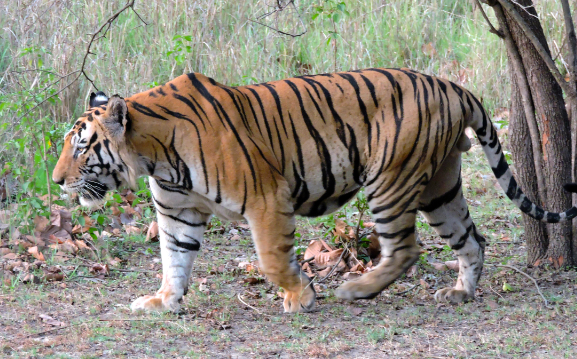The Royal Bengal Tiger: A Majestic Symbol of Wildlife Conservation
The Royal Bengal Tiger, a symbol of strength and beauty, is not just one of the largest big cats in the world but also a crucial part of our ecosystem. As their numbers dwindle due to habitat loss and poaching, understanding their significance and how we can protect them becomes increasingly important. This article delves into the characteristics, habitat, and conservation efforts surrounding this magnificent animal.
Characteristics of the Royal Bengal Tiger
The Royal Bengal Tiger is renowned for its striking orange coat, adorned with black stripes that provide excellent camouflage in the dense forests where it resides. These tigers are typically larger than other sub-species, with males weighing between 400 to 570 pounds and measuring around 10 feet in length, including their tail. Aside from their size and appearance, these tigers are known for their solitary behavior, primarily being active at dusk and dawn. This nocturnal lifestyle makes them fascinating yet elusive creatures, capturing the hearts of wildlife enthusiasts and photographers alike.
Habitat and Distribution
Royal Bengal Tigers inhabit a variety of ecosystems, including tropical rainforests, grasslands, and mangrove swamps. Primarily found in India, they also roam in parts of Bangladesh, Nepal, and Bhutan. The Sundarbans, the world’s largest mangrove forest, is a notable habitat for these tigers and serves as a UNESCO World Heritage Site. Here, the tigers have adapted to both terrestrial and aquatic environments, showcasing their versatility. However, with urbanization and deforestation encroaching upon their territories, their habitat is shrinking, necessitating urgent actions for preservation.
Conservation Efforts and Challenges
Although the Royal Bengal Tiger is currently listed as endangered, various conservation initiatives are underway to protect this majestic species. Organizations like the Global Tiger Initiative and local governments are working hard to combat poaching and habitat destruction. Protected areas, such as national parks and wildlife reserves, have been established to provide safe havens for tigers. Nevertheless, challenges persist, including human-wildlife conflict and the illegal wildlife trade. Continued awareness and support for conservation efforts are essential in ensuring that future generations can experience the beauty of the Royal Bengal Tiger.
In conclusion, the Royal Bengal Tiger stands as a powerful reminder of the fragility of our natural world. By understanding their characteristics, habitat, and the efforts required to protect them, we can play a vital role in their conservation. Let’s continue to learn about these extraordinary animals and consider supporting wildlife conservation initiatives that help preserve their existence for years to come.

